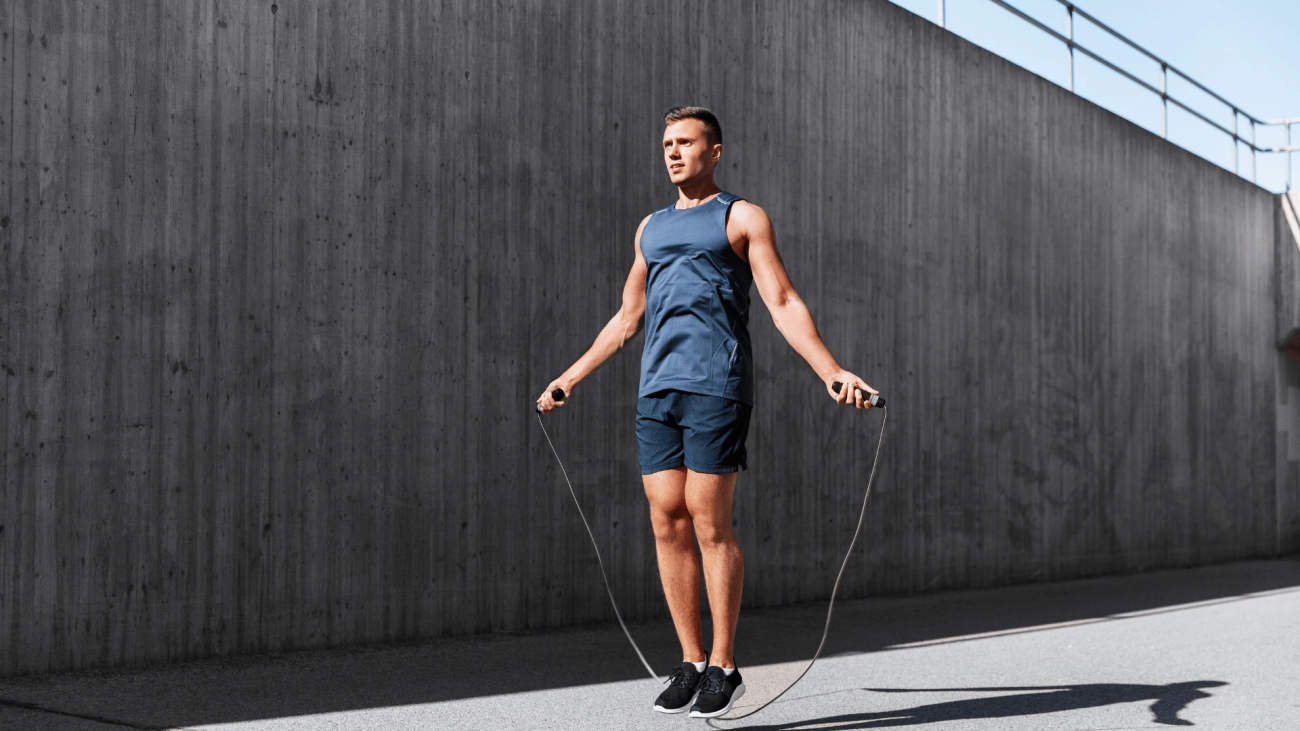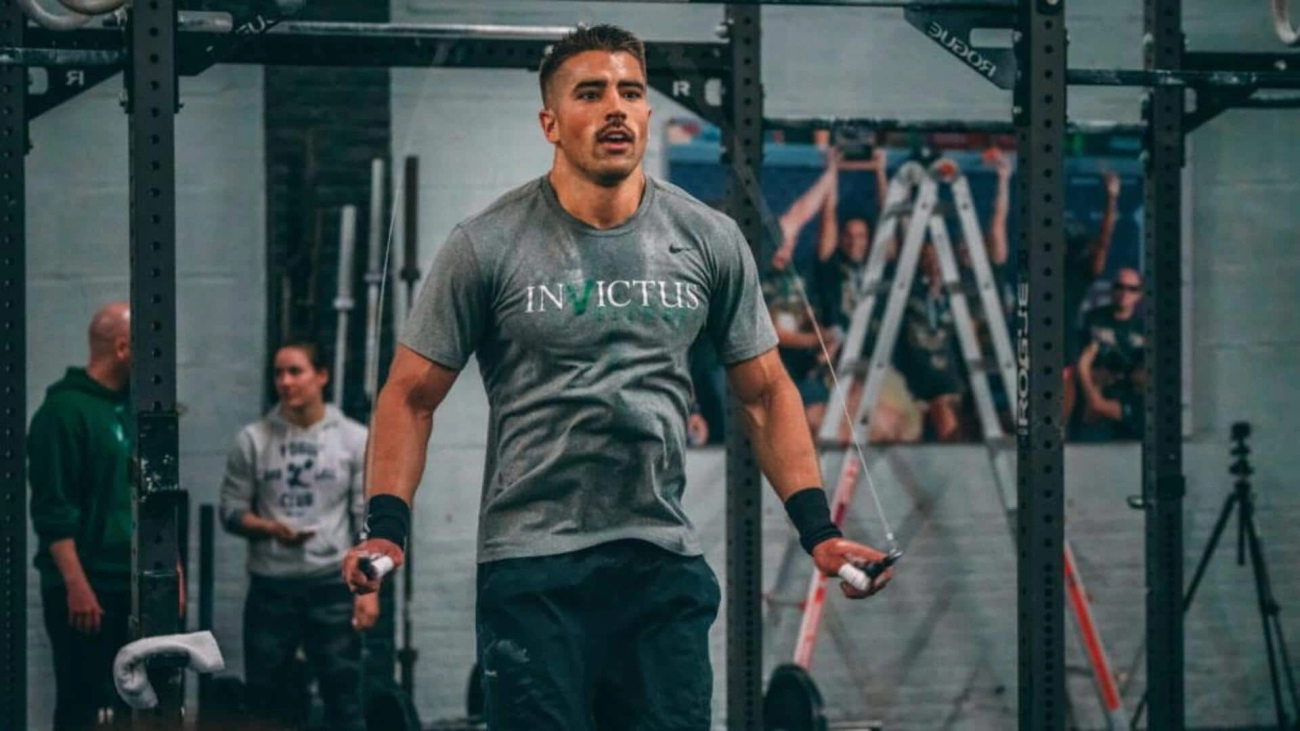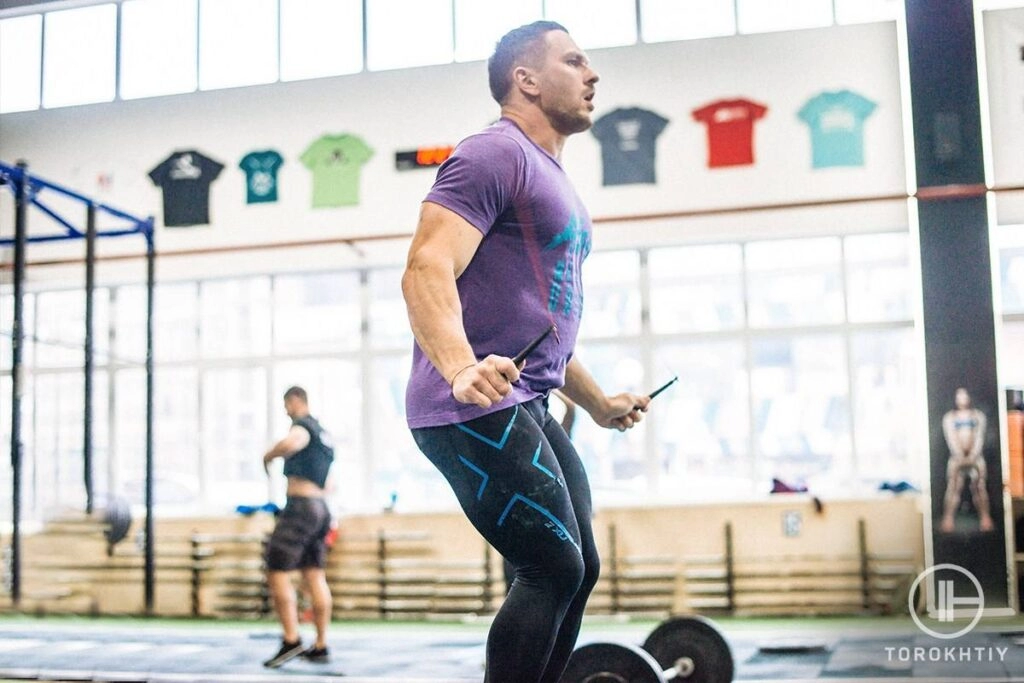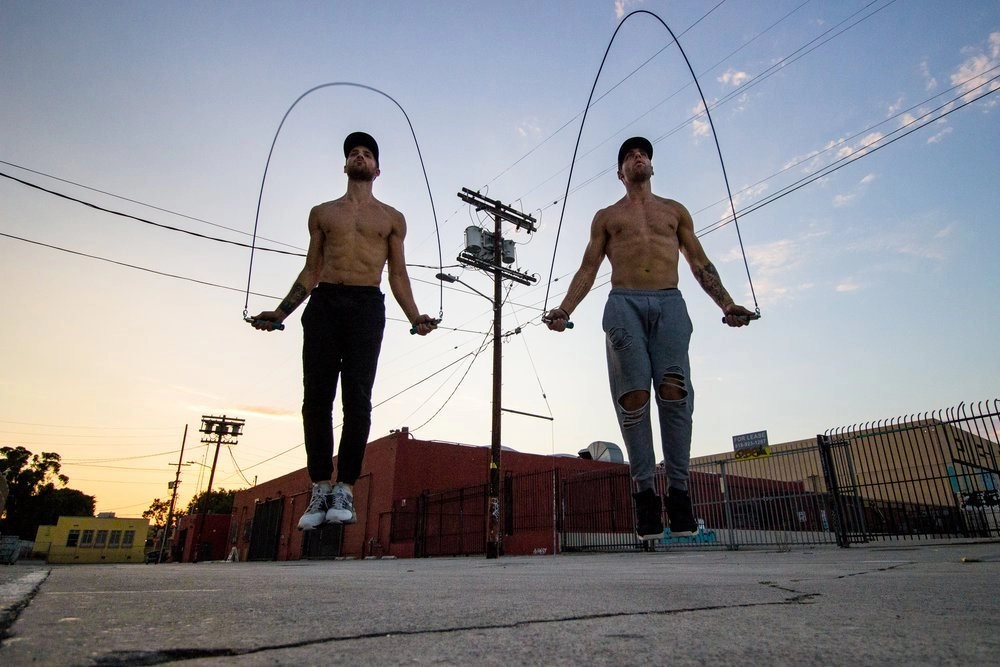What is a Double Under Jump Rope
A double under is a jump rope movement where the rope passes under your feet twice with every single jump. Unlike a standard single jump, where the rope completes one rotation as you hop once, the double under requires faster wrist action and a slightly higher jump to allow the rope to spin two full times before you land. This makes double unders both a cardio challenge and a skillful coordination exercise.
Differences Between Single Jumps and Double Unders
- Single jumps involve one rotation of the rope per jump, focusing on rhythm and steady pace.
- Double unders demand quicker rope speed and greater jump height to fit in two rotations. This creates a faster, more intense movement pattern.
- While single jumps are great for beginners building endurance, mastering double unders helps improve timing, speed, and agility.
Visualizing the Rhythm and Timing for Double Unders
Success with double unders relies heavily on rhythm and timing. Imagine:
- Jumping just high enough to let the rope spin twice fast under your feet.
- Keeping your wrists relaxed but active, turning the rope quickly with small, controlled motions.
- Syncing your jump height precisely with the rope’s speed — think of it as a dance between your body and the rope.
This coordination creates a smooth, flowing motion, turning double unders into a fast-paced, efficient workout move that boosts cardiovascular fitness and sharpens your jump rope skills.
Preparing to Learn Double Unders Jump Rope Technique

Before jumping into double unders, having the right jump rope and warming up your body properly are essential steps that set you up for success.
Choosing the Right Jump Rope for Double Unders
Pick a PVC jump rope designed for speed and durability. PVC ropes are lightweight, smooth, and fast, making them ideal for the quick rotations needed in double unders. Unlike heavier or beaded ropes, PVC ropes allow you to turn the rope faster with less effort, which is key when mastering double unders.
Proper Jump Rope Length and Adjustments
Make sure your rope length suits your height:
- Stand on the middle of the rope with both feet.
- Pull the handles straight up; they should reach roughly to your armpits.
- Too long, and the rope will drag and slow you down.
- Too short, and you may hit your feet or struggle to clear the rope in time.
Adjust your PVC rope handles or purchase a rope that can be easily trimmed for custom length to match your frame perfectly.
Warm Up Your Wrists Calves and Ankles
Double unders put extra stress on your wrists, calves, and ankles, so warming these areas is crucial to avoid injury and improve coordination.
Try these warm-up exercises for about 5 minutes before jumping:
- Wrist Rotations: Rotate both wrists clockwise and counterclockwise to loosen up.
- Calf Raises: Stand on your toes and lower your heels slowly for 20 reps to activate calf muscles.
- Ankle Circles: Lift one foot and rotate your ankle gently in both directions to enhance mobility.
Warming up not only prepares your joints but also improves your jump rope control and helps you maintain rhythm during double unders.
Step by Step Guide to Doing a Double Under Jump Rope

Mastering double unders starts with perfecting fundamentals. Here’s a clear breakdown to help you nail the double under jump rope technique and build consistency.
Master the Basic Single Bounce Jump
Before trying double unders, be confident with single bounce jumps. Stay light on your feet, jump just high enough to clear the rope, and keep a steady rhythm. This sets the foundation for timing your jumps and rope swings correctly.
Proper Rope Grip and Hand Positioning
Hold the rope handles lightly but firmly. Your hands should be just slightly above waist level with elbows in close to your sides. Avoid wide arm swings — wrist action should control the rope speed, not your whole arms.
Jump Technique Including Height Knee Bend and Foot Placement
- Jump height: Keep your jumps about 6–12 inches off the ground so you have enough clearance for the double rotation.
- Bend your knees slightly as you push off to absorb impact and prepare for quick landings.
- Land on the balls of your feet to stay light and ready to jump again.
Rope Turning Speed and Wrist Action
Speed up your rope turning by flicking your wrists quickly and smoothly. Keep the rope close to the ground to avoid big loops, which slow the rope down. Focus on fast, controlled wrist rotation — this is critical for the rope to spin twice under your feet in one jump.
Coordinating Jump Height and Rope Speed for Two Rotations
Timing is key: jump slightly higher than a normal bounce, and rotate the rope faster than usual to get two full rotations. Work on syncing your jump and wrist flick so the rope passes under your feet twice without catching on your legs.
Breathing and Rhythm Tips for Consistency
- Keep your breathing steady — avoid holding your breath.
- Find a rhythm that feels natural; many like to count or use a metronome for pacing.
- Consistency in breathing and timing helps smooth out your double under workout and prevents early fatigue.
By focusing on these steps — solid single jumps, controlled wrist speed, proper jump height, and rhythm — you’ll be well on your way to mastering double unders efficiently and smoothly.
Common Mistakes in Double Under Jump Rope and How to Fix Them
When learning double under jump rope technique, many jumpers hit the same roadblocks. Let’s break down the most common double under jump rope mistakes and how you can fix them for smoother, faster sessions.
Excessive Arm Movement and Large Rope Swings
A lot of beginners swing their arms too wide or too high, which wastes energy and slows down the rope.
How to fix it:
- Keep your elbows close to your sides.
- Use just your wrists to turn the rope quickly and efficiently.
- Focus on small, controlled circular motions instead of large arm swings.
Jumping Too High or Too Low
Jumping too high throws off your timing and tires you out. Jumping too low means the rope can’t pass under twice before you land.
How to fix it:
- Aim for a jump height of about 2-3 inches off the ground—just enough to clear the rope twice.
- Land softly on the balls of your feet to prepare for the next jump.
- Keep your knees slightly bent while airborne to stay balanced.
Rope Tangling and Hitting Feet
If your rope tangles or hits your feet repeatedly, it’s usually a timing or rotation speed issue.
How to fix it:
- Practice faster wrist rotations to increase rope speed.
- Make sure your rope length is adjusted correctly for your height.
- Start with consistent single jumps, then add in double under attempts with steady rhythm.
Timing Errors and Losing Rhythm
Double unders are all about rhythm. When your timing is off, you’ll miss the second rope pass or trip up.
How to fix it:
- Use a steady pace—try counting or using a metronome to keep time.
- Sync your jumps with rope rotations by focusing on wrist speed and jump height together.
- Breathe steadily and relax; tension makes timing harder.
By identifying and correcting these common double under jump rope mistakes, you’ll build better consistency and confidence every session. Keep these tips in mind, and you’ll master your double unders faster.
Practice Drills to Improve Double Under Jump Rope Skills
Getting better at double unders takes focused practice with drills designed to build coordination, timing, and endurance. Here are some effective drills to help you master the double under jump rope technique and avoid common mistakes:
Single Leg Jumps for Balance and Control
- Practice jumping on one leg at a time to improve balance and ankle strength.
- This drill sharpens your foot placement and helps control the jump height needed for double unders.
- Alternate legs every 10-15 jumps to train both sides evenly.
Double Under Attempts with Pauses
- Start by doing one double under, then pause for 2-3 seconds before the next attempt.
- This breaks the drill into manageable parts, helping you focus on timing the rope speed and jump height.
- Gradually reduce the pause time as your rhythm improves.
Speed and Endurance Building Exercises
- Mix in short bursts of fast double under attempts followed by slower single jumps to build stamina.
- Use interval training: 20 seconds of max effort double unders, 40 seconds of rest or easy jump rope.
- This approach enhances your cardiovascular fitness while reinforcing the fast rope turning essential for double unders.
Using a Metronome or Counting to Maintain Rhythm
- Keep a consistent rhythm by practicing with a metronome app or counting out loud while jumping.
- Set the tempo to match your ideal rope speed, increasing it slowly as you improve.
- This helps develop muscle memory for the timing crucial to smooth, consistent double unders.
By regularly incorporating these drills into your jump rope training for double unders, you’ll develop better coordination, timing, and endurance, making your double under jump rope workouts more effective and enjoyable.
How PVCJumpRope.com Jump Ropes Enhance Double Under Performance
When it comes to mastering double under jump rope technique, having the right rope makes a huge difference. PVCJumpRope.com offers jump ropes designed specifically to improve your speed, control, and consistency for double unders.
Key Features of PVC Jump Ropes for Double Unders
- Durability: Our PVC ropes are built to last. The strong, flexible material resists wear and tear from intense training sessions, so you don’t have to replace your rope often.
- Optimal Weight: PVC jump ropes offer a perfect balance of weight—not too heavy to slow your rotations, but just enough to provide control and smooth swings. This balance helps you maintain the rapid rotations needed for double unders.
- Speed and Smoothness: PVC ropes glide smoothly through the air. They turn faster and with less friction compared to fabric or beaded ropes, making it easier to increase rope speed and timing for your double under workout.
Why PVC Ropes Are Ideal for Double Unders
Compared to alternative materials, PVC ropes stand out for several reasons:
- Consistent Rotation Speed: PVC keeps rotation steady, which is vital when you’re coordinating two rotations in one jump.
- Affordable and Adjustable: Many ropes from PVCJumpRope.com are adjustable, allowing you to find the perfect rope length for your height and style without breaking the bank.
- Great for Beginners and Pros: Whether you’re just starting your jump rope training for double unders or you’re already mastering the skill, PVC ropes adapt well to all skill levels.
Customer Highlights
Users across the United States have praised PVCJumpRope.com for enhancing their double under performance. Here’s what some customers say:
- “The speed and control I got using their adjustable PVC rope helped me finally get double unders consistent.”
- “The durability is unmatched, even after months of daily use.”
- “Lightweight and smooth—this rope made my jump rope workouts for double unders so much easier.”
Ready to boost your double under skills? Check out our selection of high-quality PVC jump ropes tailored for double unders here: Shop PVC Jump Ropes.
FAQs About Double Under Jump Rope
How long does it take to learn double unders
Learning double unders varies for everyone, but most beginners can expect to get the basics down in about 2 to 4 weeks with consistent practice. The key is regular, focused training using proper jump rope double under technique and drills. If you’re already comfortable with single jumps and can keep a steady rhythm, it usually speeds up the process. Don’t rush—mastering the timing between jump height and rope speed is crucial.
What to do if tripping on the rope
Tripping on the rope is one of the most common double under jump rope mistakes. Here’s what you can do to fix it:
- Check your rope length: The rope should come up to your armpits when standing on the middle.
- Focus on wrist action: Use your wrists to turn the rope quickly, rather than swinging your arms.
- Jump just high enough: You need a little more height than a single jump but not too high to lose control.
- Keep consistent timing: Try using a metronome or counting out loud to stay in rhythm.
- Slow it down: If you’re struggling, practice double under attempts with pauses between jumps to build coordination.
Can double unders be done daily
Yes, double unders can be done daily, but listen to your body. Since they’re high-intensity and impact your calves, ankles, and knees, make sure to:
- Start with shorter sessions (5–10 minutes).
- Include proper warm-ups to avoid injuries.
- Gradually increase duration and intensity over time.
- Mix in single jump rope exercises or rest days if you feel too sore.
Daily practice can improve stamina and technique, but recovery is just as important to avoid strains.
Are double unders good for weight loss
Double unders are an excellent workout for weight loss because they burn a lot of calories quickly. They combine cardio, coordination, and strength—working your legs, core, and upper body in a way that boosts metabolism. Doing double unders regularly:
- Helps increase cardiovascular endurance.
- Builds muscle tone in key areas.
- Burns fat efficiently thanks to high intensity.
For best results, pair double under jump rope workouts with a balanced diet and overall fitness plan. The fast pace and calorie burn make double unders a smart choice if weight loss is your goal.



